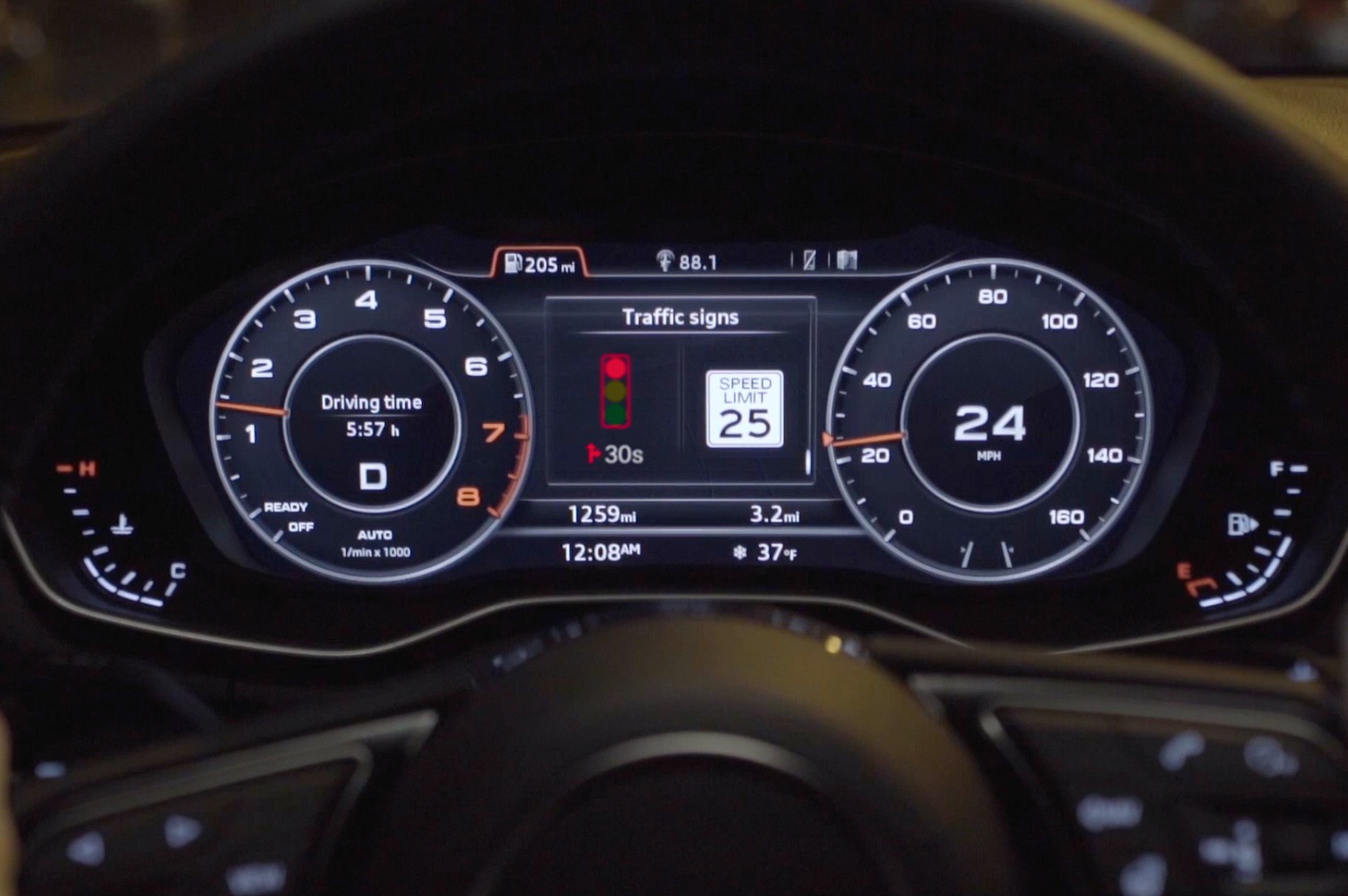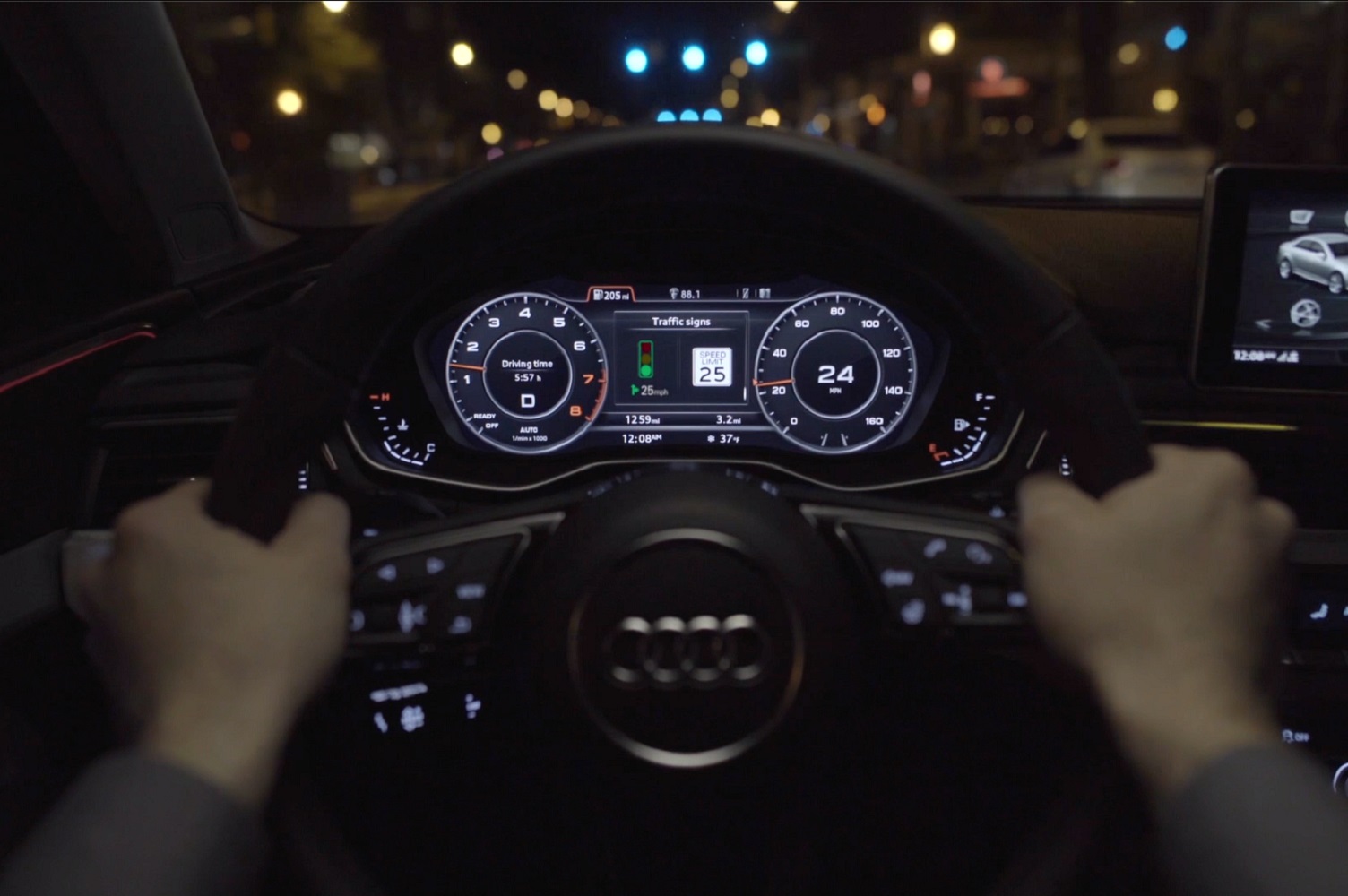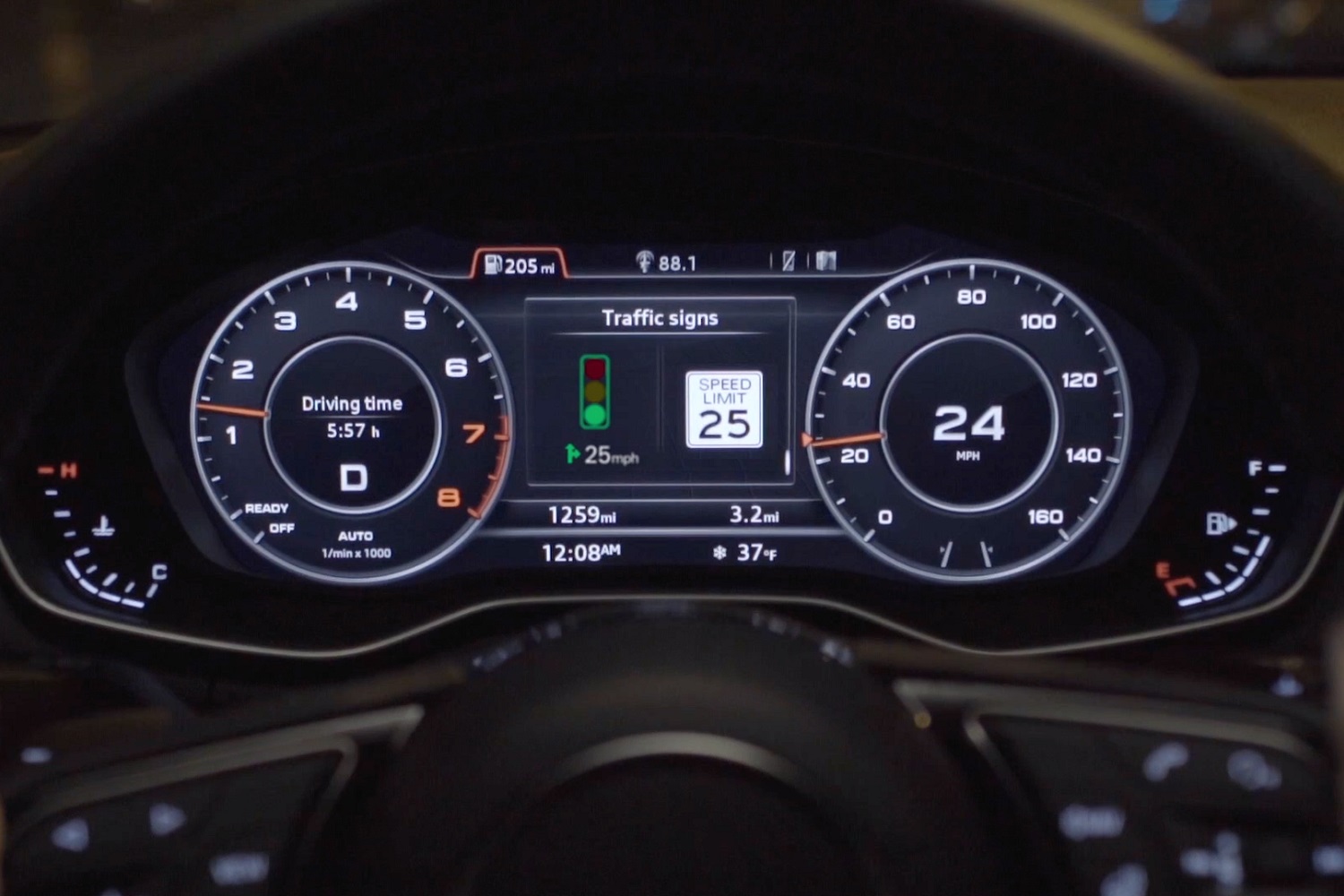Audi is teaching its cars the language of traffic lights. The German company began offering traffic light information technology on some of its vehicles in 2016, and it added clever features in 2019 that tell drivers when they’re clear to keep cruising, and when the light they’re approaching is about to turn red. This tech saves fuel, makes commuting less stressful, and paves the way for smoother rides in self-driving cars.
Green light optimized speed advisory (GLOSA) sources data from connected traffic lights and from compatible, internet-connected Audi models to tell drivers the precise speed they need to travel at in order to catch the next green light. For example, a motorist driving between intersections at 30 mph might need to wait a few seconds for a red light to turn green. GLOSA detects that, and it recommends cruising at 25 mph to avoid stopping. Information wirelessly travels between the car, the light, and back in a fraction of a second.
GLOSA builds on Audi’s existing traffic light information tech, which tells drivers how long they need to wait until the signal turns green. The countdown is displayed directly in the car’s digital instrument cluster, and in the head-up display on cars equipped with one. It’s a convenience feature, as we’ve never met someone who liked waiting at a light, but it also saves fuel. Accelerating toward the next light, braking to stop, and accelerating again burns more fuel than gently coasting.
On a secondary but more lasting level, GLOSA will help Audi roll out autonomous cars in the coming years. Self-driving vehicles will have the ability to quiz traffic lights in order to plan their next move. This will make them safer, while ensuring passengers get a smooth, jolt-free ride.
Audi noted that 4,700 intersections in 13 metropolitan areas were compatible with the time-to-green function as of February 2019. The cities in which the feature works are Denver, Dallas, Las Vegas, Los Angeles, New York City, Kansas City, Portland, San Francisco, Houston, Washington D.C.; Phoenix, Arizona, some parts of northern Virginia, and Gainesville and Orlando, Florida.
Lawmakers across the nation are working hand in hand with major players in the automotive industry to integrate vehicle-to-anything (V2X) technology into the infrastructure, so it’s reasonable to assume Audi’s clever tech will pop up in additional places in the coming years. The firm plans more applications, too. Looking ahead, traffic light information technology and GLOSA could communicate directly with the car’s stop-start system to tell it when to shut down the engine and when to start it, and it could help the navigation system find the quickest route from A to B.
Editors' Recommendations
- Is your check engine light on? Here are 10 possible reasons why
- 2022 Audi e-tron GT first drive review: This slot car needs no track
- Samsung Galaxy S21 will be a digital key for Audi, BMW, Ford, Genesis cars
- Audi’s updated Q5 receives extra power, better infotainment, and OLED lights
- Audi’s stylish E-Tron Sportback will teach its other EV new tricks







